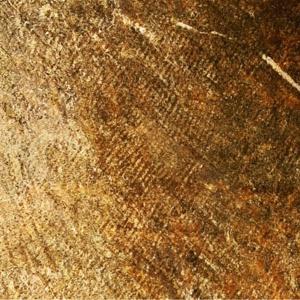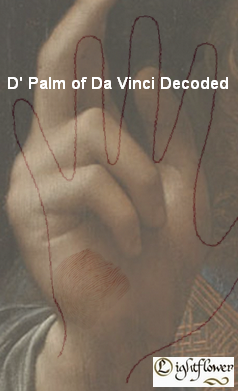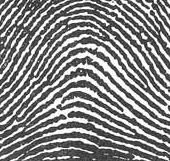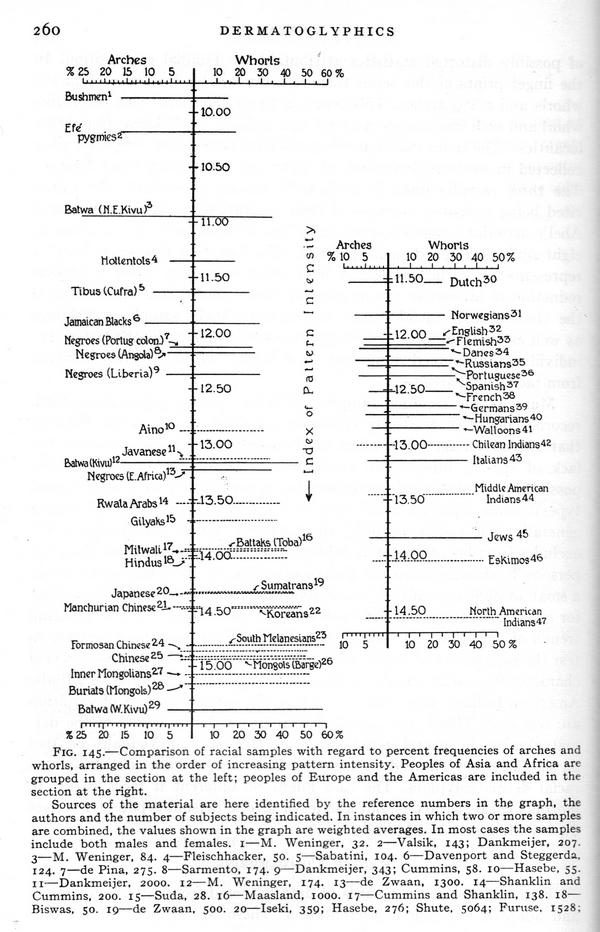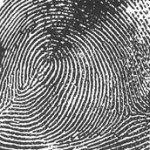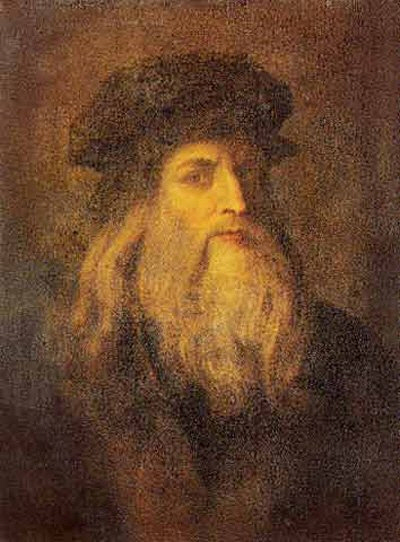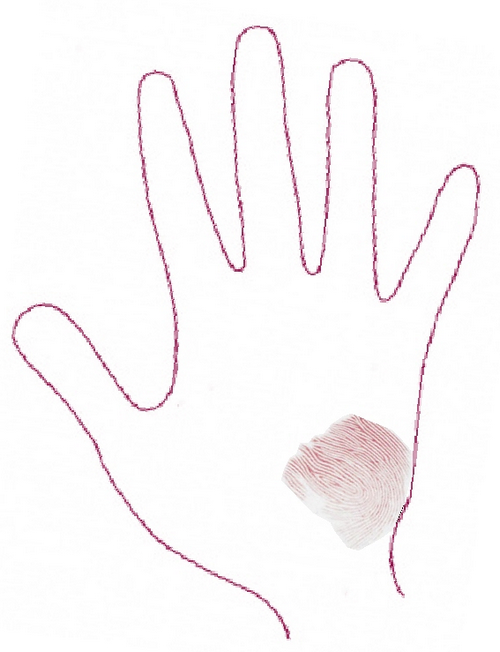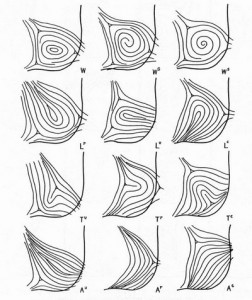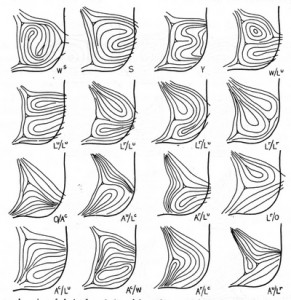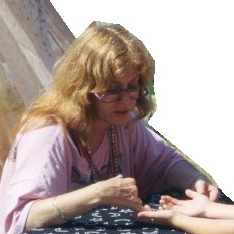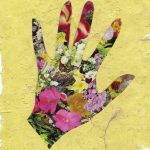Leonardo da Vinci’s Dermatoglyphics
“There are three classes of people. Those who see. Those who see when shown. Those that do not see.” ~ Leonardo da Vinci
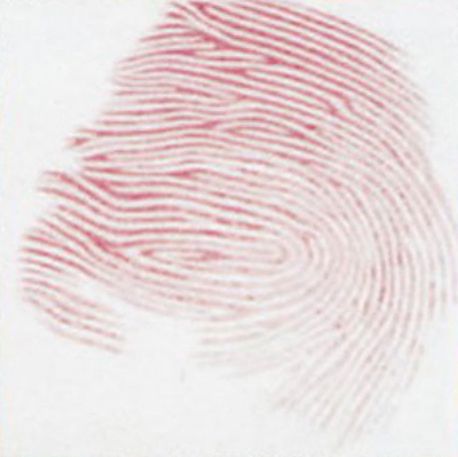 This now famous reconstructed skin ridge pattern is composed of superimposed fragments of prints left on artwork by Leonardo da Vinci, and has been alleged to be a fingerprint from his left hand’s index or middle finger by forensic experts. Interestingly, scientists claim that from this print, or another sample, the statistics show he was of Arab descent.
This now famous reconstructed skin ridge pattern is composed of superimposed fragments of prints left on artwork by Leonardo da Vinci, and has been alleged to be a fingerprint from his left hand’s index or middle finger by forensic experts. Interestingly, scientists claim that from this print, or another sample, the statistics show he was of Arab descent.
Both of these claims really caught me by surprise. First of all, it’s quite an unusual finger print compared to what I’ve seen, and I’ve seen quite a few. Second, no matter how I turn the print around to fit a fingertip, it tends to defy the developmental aspects that are involved in fingerprint formation. Finally, I’m flabbergasted that a scientist would take a vague sample, and not even know for sure what finger it would be from, and proceed to predict the ethnicity of a person from just one fingerprint. Besides the probability the sample above is not a fingerprint, it is not possible to determine a person’s ancestry from only one fingerprint.
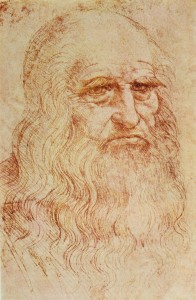
The chart below is from the book “Finger Prints, Palms and Soles” by Cummins & Midlo. (click on image to enlarge) On the left of each column is the percentage of a population that has arches, a low intensity pattern, and on the right are the whorls which are a high intensity pattern. The pattern formation recovered from Leonardo da Vinci’s artwork would be one of higher intensity with its double looping appearance. A double loop is considered a subcategory of whorls. After studying this chart, it should be easy to see that it’s not so simple to determine race from one fingerprint.
“The greatest deception men suffer is from their own opinions.” ~ Leonardo da Vinci
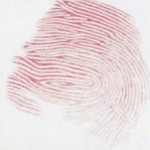
After sharing the above quote, I bravely offer my own opinion on why I don’t think this is a fingerprint, knowing that future technology could cast a different light on this old subject.
Look at your own fingerprints. Notice how the ridges create a dome or an arch effect over the top of the fingertip. Notice how the ridges on each side of your fingerprints slant downwards aiming somewhat in the direction of the fingernail and down toward the first knuckle and interphalangeal crease, typically the first deep horizontal crease at the joint. The ridges fade into non-ridged skin in this area along the side of the finger. To accommodate this natural formation, the sample of da Vinci’s would have to have the right side aiming upwards.
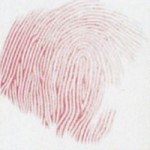 The next thing to take note of is the direction of the flow of ridges into the looping pattern. If we leave it on its side, as is, the ridges that form the inner pattern arrive into the pattern from a very horizontal position. This is unnatural. Also, the ridges at the top, over the pattern, have a disturbance where ridges are converging. The parting of the ridges, with the flow aiming upwards, in this location, is also not really representative of the flow of ridges over the central core of the print. Flipping right side up does not work either as there is no accounting for the horizontal field of ridges that flow under the pattern. These are only just a few aspects of the structure that make it difficult to reconcile this print to a normal print that would form on a fingertip pad.
The next thing to take note of is the direction of the flow of ridges into the looping pattern. If we leave it on its side, as is, the ridges that form the inner pattern arrive into the pattern from a very horizontal position. This is unnatural. Also, the ridges at the top, over the pattern, have a disturbance where ridges are converging. The parting of the ridges, with the flow aiming upwards, in this location, is also not really representative of the flow of ridges over the central core of the print. Flipping right side up does not work either as there is no accounting for the horizontal field of ridges that flow under the pattern. These are only just a few aspects of the structure that make it difficult to reconcile this print to a normal print that would form on a fingertip pad.
“It had long since come to my attention that people of
accomplishment rarely sat back and let things happen to them. They went out and happened to things.” ~ Leonardo da Vinci
“Principles for the Development of a Complete Mind: Study the science of art. Study the art of science. Develop your senses- especially learn how to see. Realize that everything connects to everything else.” ~ Leonardo da Vinci
Pieces of Leonardo’s artwork have been identified by matching the various hand prints left on the art, both deliberately and accidentally, along with looking for his trademark techniques. Being left handed, it is said he often used his right hand to soften the edges of his work. This technique was popular in the late 1400’s into the 1500’s. The process is called sfumato and results in leaving no hard edges or outlines in the work. Distant areas pick up a soft, hazy atmospheric look, and in faces, the shadows blend softly into a radiance of light. He also used the parallel rows of ridges on his palm and fingers to add texture as seen in the painting below, just slightly up and off to the right of her chin, below the tree.
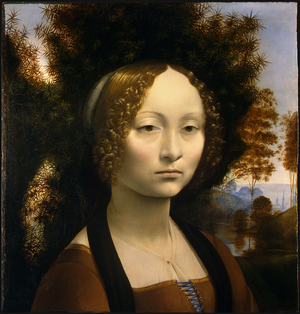
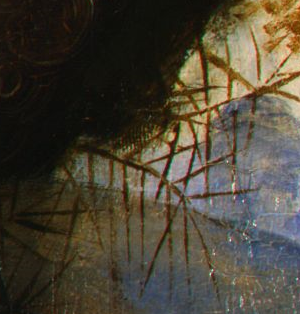
“One has no right to love or hate anything if one has not acquired a thorough knowledge of its nature. Great love springs from great knowledge of the beloved object, and if you know it but little you will be able to love it only a little or not at all.” ~ Leonardo da Vinci

“Anyone who conducts an argument by appealing to authority is not using his intelligence; he is just using his memory.” ~ Leonardo da Vinci
I tried a little experiment with the print shown at the very beginning of this post. Knowing that patterns mainly form only on the volar pads of the palms and fingertips, I cut out the print and moved it around the palm looking for where it would most appropriately fit into the natural flow of ridges and on which hand, left or right. My heart beat increased as I excitedly discovered how well it fit onto the right hand’s hypothenar. The lower quarter of the palm on the little finger side. Here we are looking at a print left by the palm of the right hand:
(below are examples of hypothenar patterns ranging from simple to complex -“Finger Prints, Palms & Soles” Cummins & Midlo)
“Water is the driving force of all nature.” ~ Leonardo da Vinci
A loop flowing down from the radial side of the hand is a fairly common configuration in the dermatoglyphics. The odds (around 15%) are good enough that there’s a real good chance a few of you have one in one or both of your palms. It adds the quality of a visual memory. People with a loop here also tend to have a desire to be around water or spend a lot of time in water. Waterfalls, fountains and just the sound of flowing water brings them peace.
“In rivers, the water that you touch is the last of what has passed and the first of that which comes; so with present time.” ~ Leonardo da Vinci
People with whorls and double loop patterns in this area have the qualities mentioned above, but add to that a deeper penetrating mind, a photographic memory, swinging from one interest to another (double loop), and psychic tendencies. Like Einstein, and other remarkable historical figures, da Vinci was suspected of being in the high end of the autistic spectrum.
“Why does the eye see a thing more clearly in dreams than the imagination when awake?” ~ Leonardo da Vinci
The hypothenar mount consists of three sections, Mars at the top under the heart line, next the Moon, and then in the lower corner, Pluto. The patterns that form in this area most commonly form on the middle section, the moon mount. There are patterns that also form lower on Pluto, but rarely higher on Mars. The Moon or Lunar area in palmistry relates to a variety of keywords, such as water, mother, nurturing, dreams, visions, psychic, and of course lunatic. Studies show that schizophrenics have a higher frequency of patterns in the hypothenar area than controls.
“A painter should begin every canvas with a wash of black, because all things in nature are dark except where exposed by the light.” ~ Leonardo da Vinci
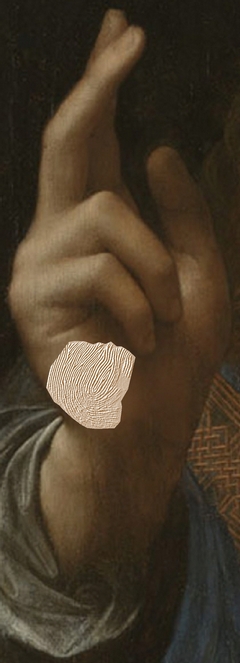
“Nothing can be loved or hated unless it is first understood.” ~ Leonardo da Vinci
Leonardo spoke of his intense curiosity. He said he took apart ten human bodies to see how they function, pulling the skin back so carefully that not a drop of blood was spilt. They had to be replaced frequently as there was only so long he could work with the decaying body.
“I have been impressed with the urgency of doing. Knowing is not enough; we must apply. Being willing is not enough; we must do.” ~ Leonardo da Vinci
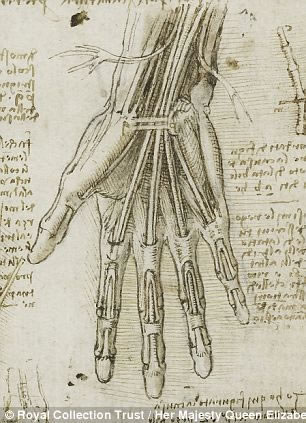
His ridges appear clear and strong. They are not obliterated by fine creases. A person with fine creases or heavily chained lines would not likely have the emotional strength or the stomach to intricately explore cadavers. He also likely had a straight heart line, but I don’t know this, I’m just making an educated guess. People with the straighter heart lines that end under the middle finger are often found working calmly in emergency and crisis situations. They handle blood and gut scenes better than the average folk. They can also seem emotionally distant or aloof.
“Marriage is like putting your hand into a bag of snakes in the hope of pulling out an eel.” ~ Leonardo da Vinci

“The painter has the Universe in his mind and hands.” ~ Leonardo da Vinci
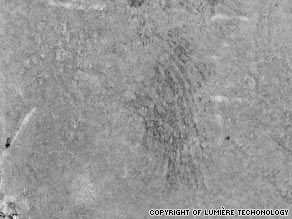
“Painting is poetry that is seen rather than felt, and poetry is painting that is felt rather than seen.” ~ Leonardo da Vinci
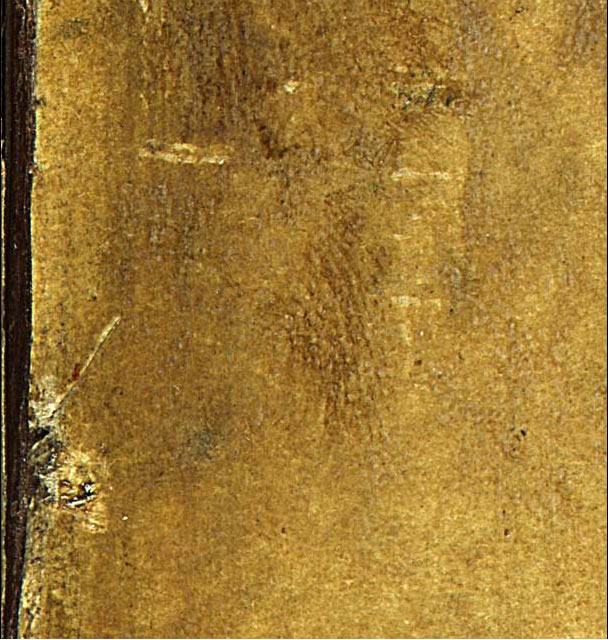
A woman who was hired to restore one of Leonardo da Vinci’s lost masterpieces, said that when she finished working on the piece she was struck with depression and separation anxiety. She had come to feel very close to him as she worked fastidiously cleaning and restoring to life his hidden work and brushstrokes. When you closely study the faces of his subjects, their eyes, their expressions, you can almost feel the passion and the state of bliss or nirvana he reached in the midst of his work. I know that when I place my hand on top of an ink print of a hand in my collection, or even in a book, I can ‘feel’ an essence of that person’s energy. Da Vinci has left for us not only his art to appreciate, love and learn from, but he also left for us imprints of himself within his work.
“The deeper the feeling, the greater the pain” ~ Leonardo da Vinci
Please feel free to leave your comments below.
in joy and peace,
Patti Lightflower
www.ireadhands.com
